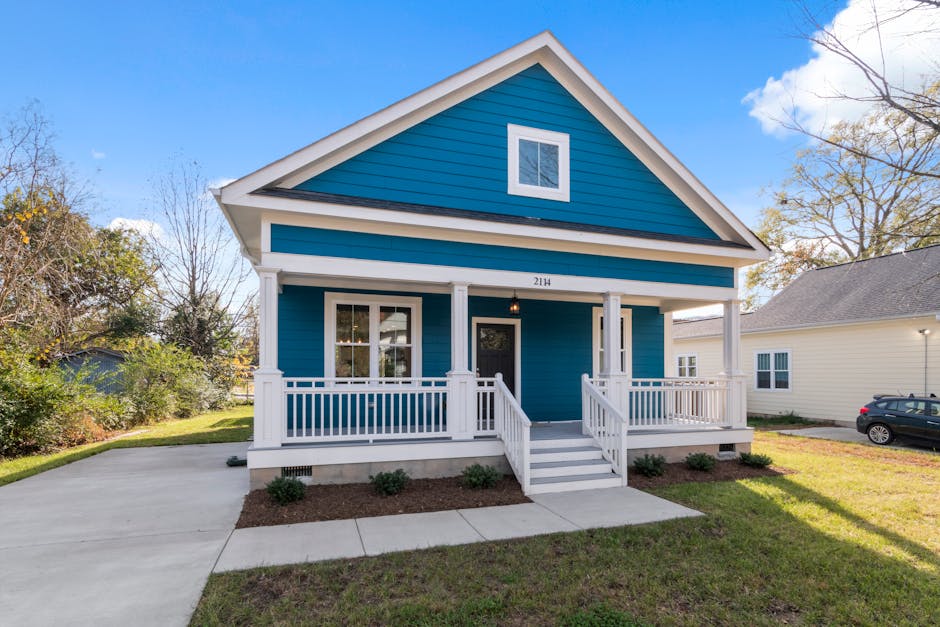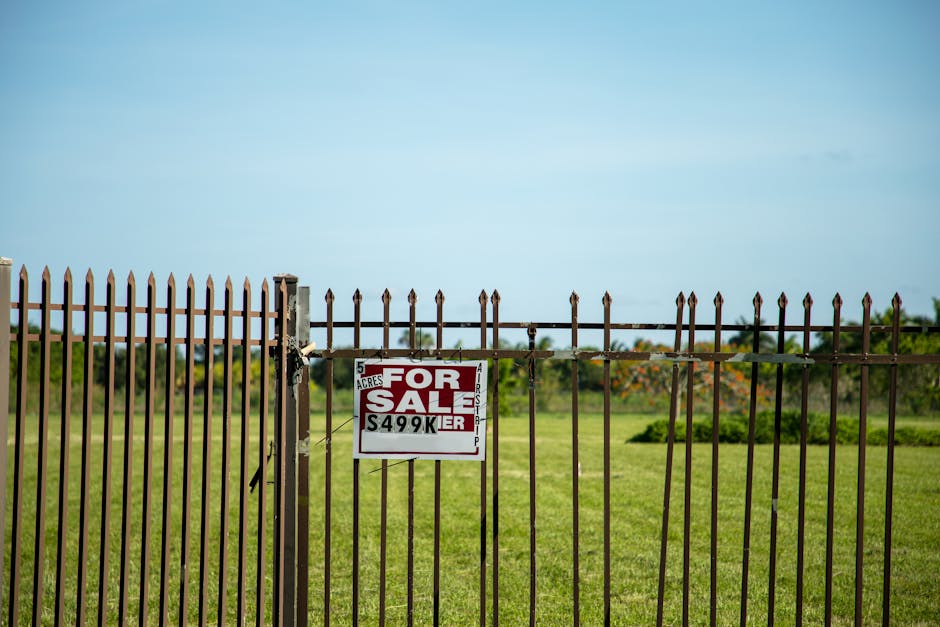Trends in Rural Property Sales
Are you considering investing in rural properties or simply curious about the current market trends? In recent years, rural property sales have experienced significant shifts influenced by various factors such as changing demographics, economic conditions, and environmental concerns. Understanding these trends is crucial for buyers, sellers, and investors alike. Let’s delve into the world of rural property sales, exploring the key dynamics shaping this market.
The Rise of Rural Real Estate: A Historical Perspective

Rural properties have always held a special allure for individuals seeking a quieter lifestyle, closer connection to nature, or lucrative investment opportunities. Historically, rural real estate was primarily seen as a retreat or a getaway destination. However, in recent years, there has been a notable shift in perception, with rural properties gaining popularity for permanent residence, agricultural purposes, or even as vacation rentals.
The COVID-19 pandemic played a significant role in accelerating this trend, as remote work became the norm for many individuals. The desire for more space, fresh air, and outdoor activities drove urban dwellers to explore rural areas for potential relocation. As a result, the demand for rural properties surged, leading to an increase in sales and prices in many regions.
Factors Influencing Rural Property Sales

Several factors contribute to the trends in rural property sales, shaping the market dynamics and influencing buyer and seller behavior. Let’s examine some of the key influencers in this sector:
1. Demographic Shifts
The aging population in rural areas has led to a transition in property ownership, with many older residents looking to downsize or sell their properties. This demographic shift has created opportunities for younger buyers and investors interested in acquiring rural land for various purposes, including farming, recreation, or development.
2. Economic Considerations
Economic conditions play a vital role in rural property sales, affecting both supply and demand. Factors such as interest rates, job opportunities, and overall market stability can impact the willingness of buyers to invest in rural properties. Additionally, government initiatives, subsidies, and agricultural policies can influence the profitability of owning rural land.
3. Environmental Awareness
Increasing environmental concerns have prompted a growing interest in sustainable living and conservation practices among property buyers. Many individuals are seeking rural properties that allow them to live off the grid, practice organic farming, or protect natural habitats. Properties with eco-friendly features or proximity to nature reserves are particularly attractive in today’s market.
4. Infrastructure Development
The availability of essential infrastructure such as roads, utilities, and internet connectivity can significantly impact the desirability and value of rural properties. Areas with well-developed infrastructure are more likely to attract buyers looking for a balance between rural charm and modern amenities. Investments in infrastructure projects can boost property sales in rural regions.
Emerging Trends in Rural Property Sales

As the rural real estate market continues to evolve, several emerging trends are reshaping the landscape of property sales. Let’s explore some of the most prominent trends influencing rural real estate transactions:
1. Lifestyle Properties
Rural properties are no longer just about agricultural land or remote cabins. Lifestyle properties that offer unique amenities such as vineyards, equestrian facilities, or self-sustaining farms are gaining popularity among buyers seeking a holistic living experience. These properties cater to individuals looking to escape the city and embrace a more sustainable lifestyle.
2. Recreational Retreats
Rural properties with access to recreational activities such as hunting, fishing, hiking, or horseback riding are in high demand among outdoor enthusiasts. These retreats serve as ideal vacation homes or weekend getaways for individuals looking to unwind and reconnect with nature. The proximity to national parks or scenic landscapes adds value to such properties.
3. Equestrian Estates
Equestrian properties, equipped with stables, riding arenas, and pastureland, are a niche market within rural real estate. Horse lovers and professional riders seek properties that can accommodate their equine companions and support their equestrian pursuits. The demand for equestrian estates has created a specialized market segment with unique considerations and preferences.
4. Sustainable Farming
With the increasing focus on sustainability and organic farming, rural properties with arable land and agricultural potential are in high demand. Small-scale farmers, homesteaders, and aspiring agricultural entrepreneurs are looking for properties that allow them to cultivate crops, raise livestock, or establish permaculture systems. The trend towards sustainable farming practices is reshaping the rural property market.
5. Remote Work Retreats
The remote work revolution has led to a rise in demand for rural properties that cater to telecommuters and digital nomads. Properties with home offices, high-speed internet connectivity, and serene surroundings are sought after by individuals looking to combine work and relaxation in a rural setting. The flexibility of remote work has opened up new possibilities for property buyers seeking a change of scenery.
Expert Opinions: Insights from Real Estate Professionals

To gain further insights into the trends shaping rural property sales, we consulted with real estate experts with extensive experience in the field. Here are some key takeaways from our conversations:
1. John Smith, Real Estate Agent
“The demand for rural properties has surged in recent years, driven by a combination of lifestyle preferences and economic factors. Buyers are looking for properties that offer a balance between natural beauty and modern conveniences. As remote work becomes more common, rural real estate presents exciting opportunities for investors and homeowners alike.”
2. Sarah Johnson, Agricultural Specialist
“The trend towards sustainable farming practices is reshaping the agricultural real estate market. Buyers are interested in properties that support regenerative agriculture, organic farming, and conservation efforts. The potential for sustainable income streams and environmental stewardship makes rural properties with agricultural potential highly attractive.”
3. Michael Brown, Land Developer
“Infrastructure development plays a crucial role in unlocking the value of rural properties. Investing in roads, utilities, and connectivity can enhance the marketability of rural land and attract a diverse range of buyers. As more individuals seek to escape the urban hustle, well-planned developments in rural areas hold significant potential for growth.”
Common Misconceptions About Rural Property Sales
Despite the growing interest in rural properties, there are several misconceptions that persist in the market. Let’s debunk some common myths about rural property sales:
1. Rural Properties Are Isolated
Contrary to popular belief, rural properties can offer a sense of community and connectivity. Many rural areas have vibrant local economies, cultural events, and social gatherings that foster a strong sense of belonging. With advancements in technology and transportation, rural living is more connected than ever before.
2. Rural Properties Are Only for Farmers
While agriculture is a significant component of rural life, rural properties cater to a wide range of interests and lifestyles. From equestrian enthusiasts to outdoor adventurers, there is a rural property to suit every buyer’s preferences. Whether you’re looking for seclusion or community, there is a rural property for you.
FAQs About Rural Property Sales
Have questions about rural property sales? Here are some frequently asked questions to provide clarity on this topic:
1. What are the advantages of investing in rural properties?
Investing in rural properties offers several benefits, including lower prices compared to urban areas, potential for land appreciation, opportunities for sustainable living, and diversification of assets. Rural properties can serve as a hedge against market volatility and offer a peaceful retreat from city life.
2. How can I find the right rural property for my needs?
To find the right rural property, consider your lifestyle preferences, budget, location preferences, and long-term goals. Work with a real estate agent specializing in rural properties to help you navigate the market, conduct thorough research on properties of interest, and visit potential properties to assess suitability.
To Wrap Things Up
As the real estate landscape continues to evolve, rural properties are emerging as compelling investment opportunities for a diverse range of buyers. Whether you’re seeking a peaceful retreat, a sustainable farming venture, or a remote work retreat, rural properties offer a unique blend of nature, serenity, and potential for growth. Stay informed about the latest trends in rural property sales to make informed decisions and capitalize on the opportunities available in this dynamic market.




